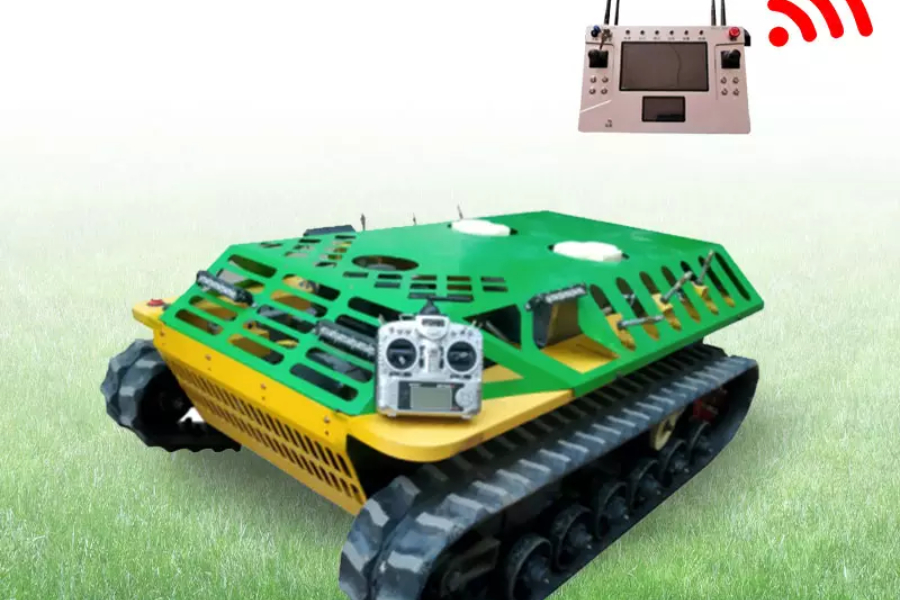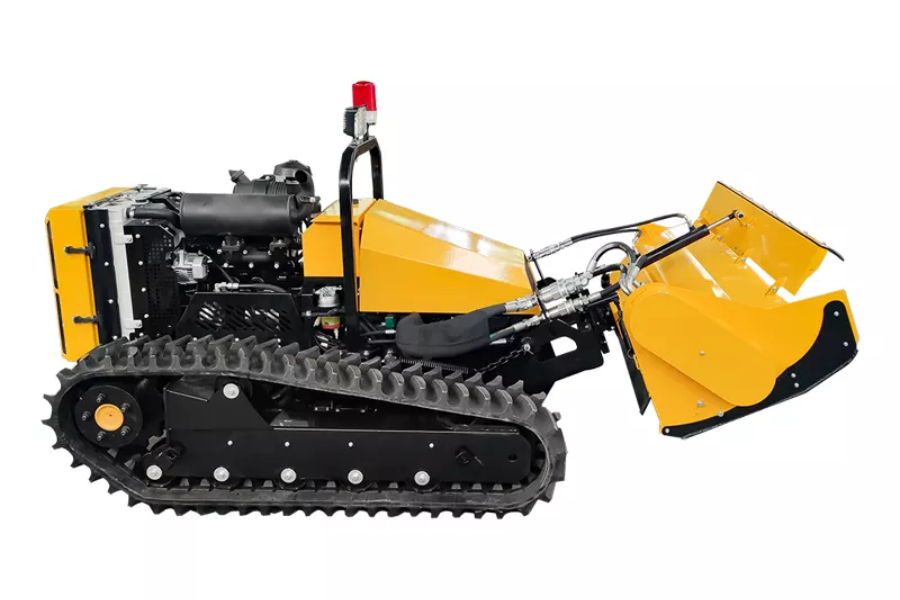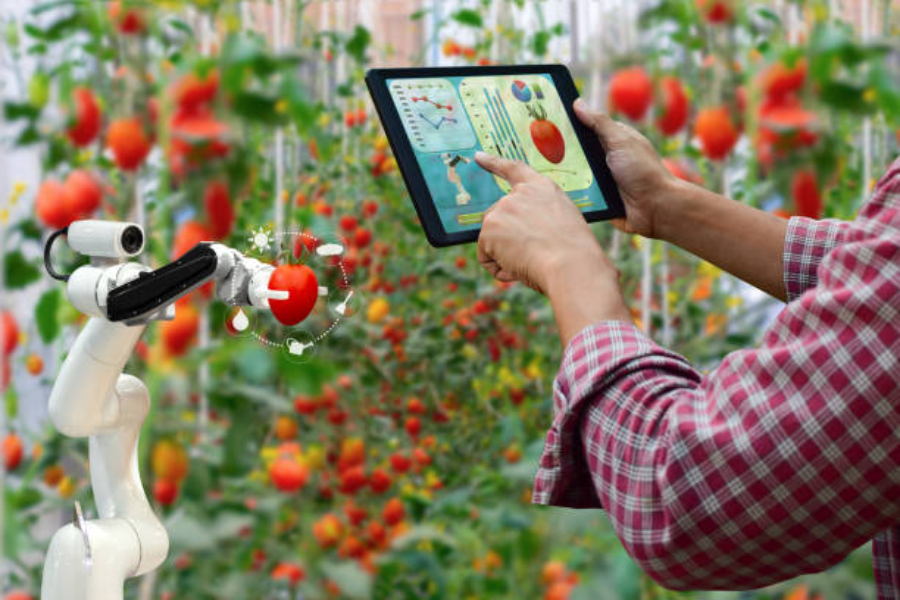The farming industry has had major improvements over the years. The addition of agribots in the industry has helped farmers in many ways. These agricultural robots can help with planting different crops, watering the crops, and also come in handy during harvesting. There is no doubt that using agricultural robots helps reduce the needed manual labor and also increases production.
Read on to find out the main advantages of using agricultural robots and the different types of agribots available for farming.
Table of Contents
Types of agricultural robots
The main advantages of using agricultural robots
Conclusion
Types of agricultural robots
Agricultural robotics involves the logical proliferation of automated technology into the bio-systems like agriculture, greenhouse, forestry, fisheries, and horticulture. It is simply the replacement of any common agricultural techniques with highly efficient machines that carry out the same tasks.
Agricultural robots are deployed for several agricultural purposes. Some of these applications include harvesting and weed control. The robots designed for the applications mentioned earlier are the flying robot, the mobile robot, Demeter, and the forester robot.
The mechanical components include the end effector, gripper, and manipulator. The manipulator is designed to carry out the task which enables the required motions; thus, boosting economic efficiency. The end effector is positioned at the end of the robotic arm and carries out several agricultural functions like picking.
The following are examples of agricultural robots and their specific farm functions:
1. Seed-planting robots
Seed-planting robots are the ideal solution for growing crops on large acres of land. The end result will save time and reduce costs. Some agricultural robots work in collaboration with humans to plant seeds. Others are easily programmed to use GPS technology to autonomously plant seeds. For instance, the RoboWeeder2 can plant seeds with precision at a fast speed of 0.4 acres per hour.
2. Watering robots

Buyers will use robots to reduce the struggle that comes with watering plants. They will eliminate any chances of drowning crops, which prevents damage. This is because some crops require certain amounts of water on a daily basis and robots can carry out the task efficiently.
Most agribots use soil moisture sensors to determine when and where the plants need watering. They also have the ability to manage irrigation schedules and adjust them automatically according to weather conditions. Buyers won’t need to worry about under or over-watering plants.
3. Weed removal robots

Removing weeds from crops is an expensive exercise as it uses a lot of labor. In the long run, there are reduced resources and farm profits. Buyers can now use robots to carry out the weed removal task for them.
The weed removal robots are designed to pull the weeds out of the farm fields, which lightens the soil for growing crops. They are programmed to weed without disrupting the nearby plants. This is because they use vision sensors and GPS technology to differentiate between plants and weeds.
4. Crop harvesting robots

It is worth noting that crop harvesting is a tedious process in farming. Some agribots can operate without human intervention to carry out the actual harvesting. For instance, robotic arms are designed to work in orchards to pick ripe fruits.
With the inclusion of complex software with advanced algorithms and cameras, they can identify ripe fruits. Crop harvesting robots can also collect information about the crops which helps farmers measure yields. In as much as the harvest is important, the information collected is helpful too.
The main advantages of using agricultural robots
1. Reduced labor costs
Robots offer a great edge in reducing labor costs. Agricultural fields are pretty expensive to manage considering the price of crops that is subject to the market. As such, using agribots helps reduce the expenses that come with depending on human laborers.
With reduced errors, and robots carrying out tasks in less time, the profit margins are increased. For instance, an agribot used on a one-acre farm to plant seeds would accomplish the task three times faster than 10 laborers. The task with the robot requires just two operators which eliminates human labor and thus reduces the labor cost.
2. High yields
Agricultural robots guarantee buyers better and higher yields from their crops. There is a need for every planted seed to grow into a full-grown plant under favorable conditions. This increases the harvest as the farming process is optimized to give maximum productivity. In this case, robots minimize losses and raise crop yield.
3. Robots take less space
Robots used in agriculture take up less space compared to traditional farm equipment. Buyers should consider the task space and workspace of a robot. The task space is the area in which a robot’s operation is executed.
A robotic arm has 6 degrees of freedom (DOFs); thus a pick-and-place task will require around 3 DOFs. On the other hand, a robot workspace indicates the reachable configurations of the end-effector. The robotic arm has two or more revolute joints that can be freely moved from 0 to 360 degrees.
Potential buyers with small acres of land no longer require large pieces of moving farming machines. The robots are multifunctional and reduced in size. They carry out farm operations without affecting the nearby plants.
4. Fewer errors
Agribots have no time off but still, work with higher speeds and closer tolerances. They operate with few errors while handling tasks at higher velocities and quality. They can also work around rocks, trees, ponds, and other obstacles easily without damaging crops.
The robots have the capability to measure distance while planting seeds. They can determine the amount of water and pesticides required to be sprayed on the selected areas of application. All these with minimal errors lead to enhanced yields.
5. Reduced use of pesticides
Robots administer measured amounts of pesticides to the affected crops. This helps reduce any wastage as the pesticides are applied to areas of the farm which require the treatment. They approximately reduce the use of pesticides on farms by 80%. The agribots also protect humans from the harmful effects of the chemicals if administered by hand.
Conclusion
The qualities mentioned above make robots the right choice for agriculture. Buyers can now move away from hard labor and numerous repetitions in large crop farms. They should use robots that offer flexibility, precision, and speed in performing agricultural operations.
Robots make fewer or no mistakes, save time, and eliminate tasks that could be dangerous to humans. To find efficient agricultural robots, visit Chovm.com.





 বাংলা
বাংলা Nederlands
Nederlands English
English Français
Français Deutsch
Deutsch हिन्दी
हिन्दी Bahasa Indonesia
Bahasa Indonesia Italiano
Italiano 日本語
日本語 한국어
한국어 Bahasa Melayu
Bahasa Melayu മലയാളം
മലയാളം پښتو
پښتو فارسی
فارسی Polski
Polski Português
Português Русский
Русский Español
Español Kiswahili
Kiswahili ไทย
ไทย Türkçe
Türkçe اردو
اردو Tiếng Việt
Tiếng Việt isiXhosa
isiXhosa Zulu
Zulu